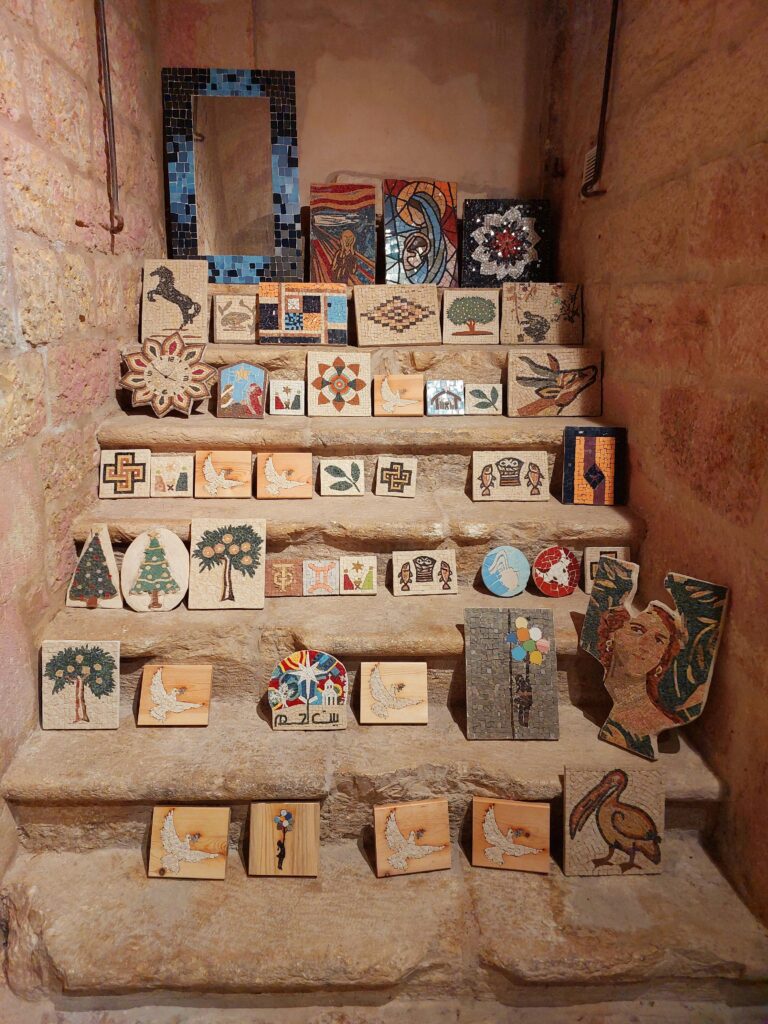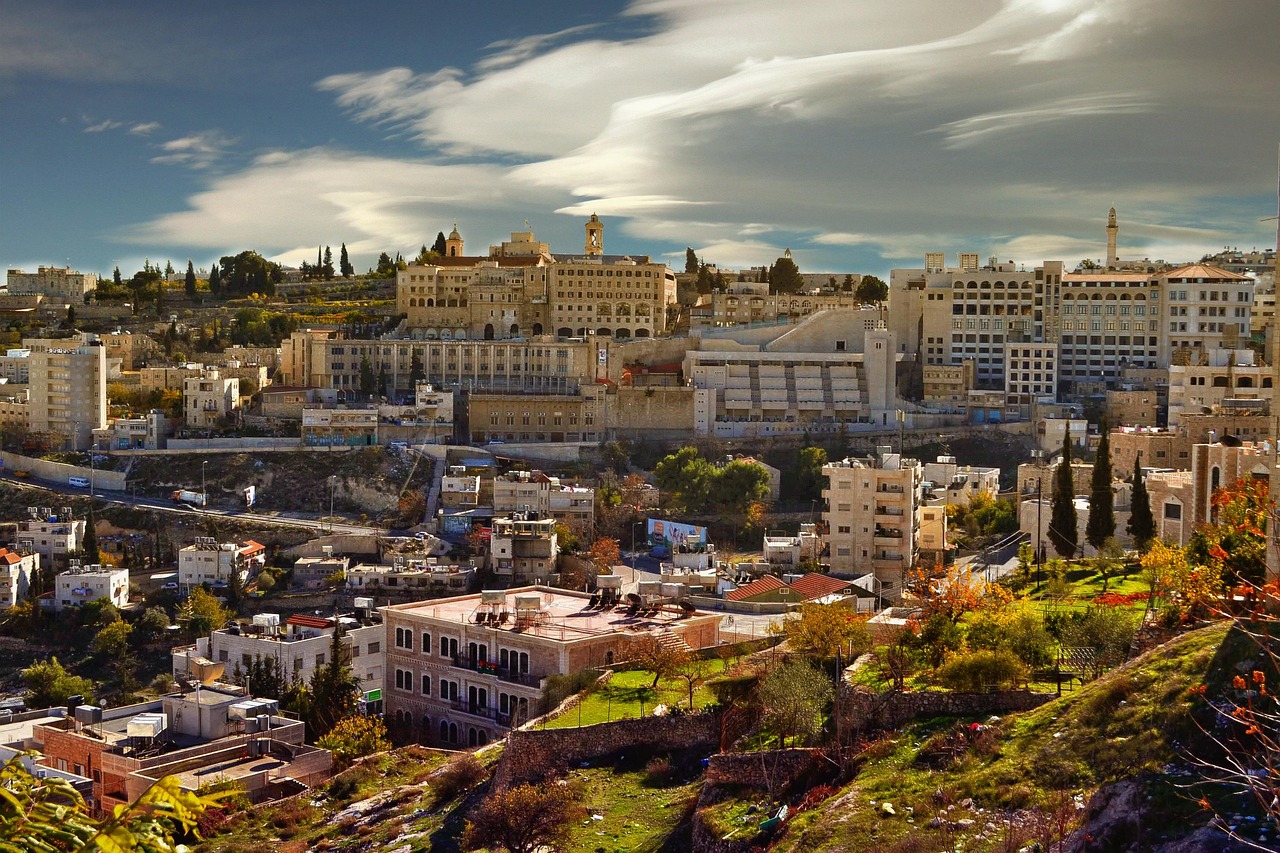In Bethlehem, a city steeped in religious tradition and renowned for its centuries-old artisanal crafts, the looming prospect of a second Easter season with dwindling tourist numbers has left local carvers deeply anxious. Traditionally, Easter is not only a time of profound spiritual significance but also a critical economic period when pilgrims and tourists flood the city, purchasing religious artifacts, sculptures, and handcrafted souvenirs. This year, however, the streets of Bethlehem tell a different story.

The Cultural and Economic Impact
Traditional Craftsmanship at Risk:
For generations, Bethlehem’s skilled stone carvers and artisans have relied on the surge of visitors during Easter to sustain their livelihoods. Their intricate carvings, often depicting biblical scenes and revered saints, are more than mere commodities—they are expressions of a rich cultural and spiritual heritage. With the downturn in tourism, these traditional crafts face the threat of fading into obscurity, as fewer hands are available to create new works and sustain the local artistic legacy.
Economic Hardships:
The absence of the usual influx of tourists directly translates to lost revenue for many families. Small workshops and market stalls that once buzzed with the energy of trade during Easter now stand silent. Local business owners and craftsmen worry that the economic shock could have long-lasting effects on the community, weakening the social fabric that ties Bethlehem’s residents to their collective history.
Emotional Toll on Artisans:
Beyond the monetary losses, the situation has taken an emotional toll on the carvers. For them, each piece is a labor of love, infused with the history and identity of their people. The thought of another Easter passing without the customary celebratory atmosphere and without outsiders appreciating their work is a blow to their pride and creativity.
Underlying Causes and Broader Context
Global Travel Trends:
The decline in tourist numbers is not unique to Bethlehem. Worldwide, fluctuating travel restrictions, economic uncertainties, and changing visitor behavior have reshaped global tourism. In Bethlehem, a city that draws millions of pilgrims and history enthusiasts each year, these trends mean a significant drop in foot traffic during one of its peak seasons.
Local Response and Community Efforts:
In response to the challenging times, local officials and community organizations are scrambling to adapt. Some initiatives include online marketing campaigns aimed at reaching a global audience through virtual tours and social media storytelling, while others are exploring ways to pivot towards domestic tourism. Community leaders are also calling for increased support from cultural preservation agencies and international organizations to help safeguard the artisanal traditions that define Bethlehem.
Resilience in the Face of Adversity:
Despite the hardships, there is a palpable sense of resilience among Bethlehem’s artisans. Many are rethinking their business models, exploring new avenues for showcasing their artistry beyond the traditional market. This reimagining of their role in a rapidly shifting tourism landscape reflects the enduring spirit of a community that has weathered centuries of political and economic changes.
Looking Ahead: Preserving Heritage in a Changing World
Innovative Adaptations:
To counter the challenges, some carvers are embracing digital platforms to showcase and sell their work online, reaching customers beyond local markets. Virtual exhibitions and online craft fairs are emerging as innovative solutions to the current crisis.
Calls for Tourism Revival:
Local advocates emphasize the need for coordinated efforts to revive international tourism, highlighting how essential visitor engagement is not only for economic recovery but also for the preservation of cultural heritage. A revitalized tourism strategy could help restore the vibrancy of Bethlehem’s ancient markets, ensuring that traditional crafts continue to thrive.

A Future in Flux:
As Bethlehem navigates these uncertain times, its carvers remain hopeful that a return to normalcy is on the horizon. The ongoing dialogue between local leaders, artisans, and support organizations reflects a commitment to preserving the unique cultural identity of this historic city, even as they adapt to a rapidly changing world.
Frequently Asked Questions
Q: Why is Easter particularly significant for Bethlehem’s carvers?
A: Easter is one of the busiest times for Bethlehem, bringing a surge of tourists and pilgrims who purchase religious art and handcrafted items. This period is crucial for the economic and cultural sustenance of local artisans.
Q: What types of crafts do the carvers produce?
A: The artisans in Bethlehem are known for their stone carvings, religious icons, sculptures, and various handcrafted souvenirs that depict biblical scenes and cultural motifs deeply rooted in the city’s heritage.
Q: What has caused the decline in tourist numbers during Easter?
A: Global travel uncertainties, including changing travel restrictions and economic factors, have contributed to a significant drop in international tourist arrivals during this peak season.
Q: How is the local community responding to the tourism decline?
A: Community leaders and local organizations are exploring alternative strategies such as enhancing digital outreach, promoting virtual tours, and seeking support from international cultural preservation agencies to help mitigate the impact.
Q: What are the potential long-term effects if tourism does not recover?
A: Prolonged declines in tourism could jeopardize the livelihoods of local carvers, lead to the erosion of traditional artisanal skills, and diminish the cultural vibrancy of Bethlehem, affecting both the economy and cultural heritage.
Q: Are there any plans to support the artisans during this period?
A: Efforts are underway to provide financial and technical support to local artisans, including initiatives to market their work online and programs designed to help them pivot their business models to adapt to current trends.
Q: Can digital platforms help sustain Bethlehem’s artisanal traditions?
A: Yes, digital platforms and online marketplaces offer a promising avenue for the carvers to reach a global audience, showcase their work, and generate income despite reduced physical tourism.
Q: How important is international tourism to Bethlehem overall?
A: International tourism is vital to Bethlehem’s economy and cultural life. The influx of visitors during key seasons like Easter supports a wide range of businesses and preserves the city’s rich heritage.
Q: What challenges do the carvers face in transitioning to digital platforms?
A: While digital platforms offer new opportunities, challenges include developing the necessary technical skills, ensuring quality representation of their work online, and competing in a global digital marketplace.
Q: What can be done to revive tourism in Bethlehem?
A: A coordinated effort involving local government, tourism boards, and international organizations is needed to create targeted campaigns, improve infrastructure, and promote Bethlehem as a destination for both cultural and heritage tourism.

As Bethlehem faces another Easter with fewer visitors, its carvers stand at a crossroads. The challenge of sustaining a rich cultural legacy amid a shifting tourism landscape has prompted both a reassessment of traditional practices and a bold reimagining of the future—one where the ancient artistry of Bethlehem continues to inspire despite modern obstacles.
Sources Aljazeera


